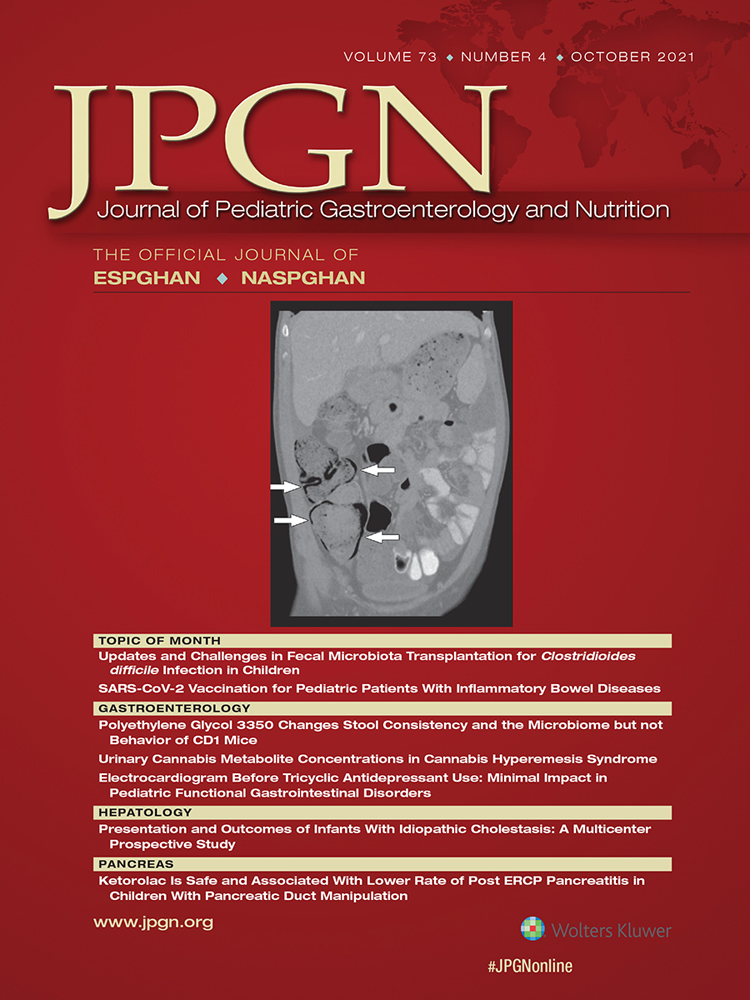Polyethylene Glycol 3350 Changes Stool Consistency and the Microbiome but not Behavior of CD1 Mice
Drs Michael T. Bailey and Ross M. Maltz are co-senior authors.
This study was supported by Nationwide Children's Hospital Foundation. Work in this study was independent from the funding source, which played no role in study design, collection, analysis, interpretation of the data or writing the article.
The authors report no conflicts of interest.
Supplemental digital content is available for this article. Direct URL citations appear in the printed text, and links to the digital files are provided in the HTML text of this article on the journal's Web site (www.jpgn.org).
ABSTRACT
Objectives:
Polyethylene Glycol 3350 (PEG3350) is a laxative commonly used to treat constipation in children. The Food and Drug Administration has received reports of increased anxiety, aggression, and obsessive--compulsive behaviors in children administered PEG3350. Thus, we assessed whether daily administration of PEG3350 leads to anxiety-like behavior in mice.
Methods:
Outbred CD-1 IGS mice were administered either a high or a low dose of PEG3350 via daily oral gavage for 2 weeks. As a laxative comparison and control, additional mice were given a high or low dose of magnesium citrate or vehicle (water). Weight and stool consistency were assessed after each gavage to determine laxative effectiveness. Anxiety-like behaviors were assessed using light/dark, open field, and elevated plus maze (EPM) tests at baseline, after 2 weeks of daily gavage, and after a 2 week washout in experiment 1, and after 2 weeks of daily gavage in experiment 2. Stool samples were collected for microbiome analysis in experiment 2 at baseline, after 2 weeks of daily gavage, and after 2 weeks washout.
Results:
PEG3350 and magnesium citrate significantly changed stool consistency, as well as microbiome alpha and beta diversity. Anxiety-like behaviors were not, however, different in mice administered low or high doses of PEG3350 or magnesium citrate.
Conclusions:
Although changes in stool consistency and the gut microbiome occurred, administration of PEG3350 did not alter anxiety-like behaviors.




